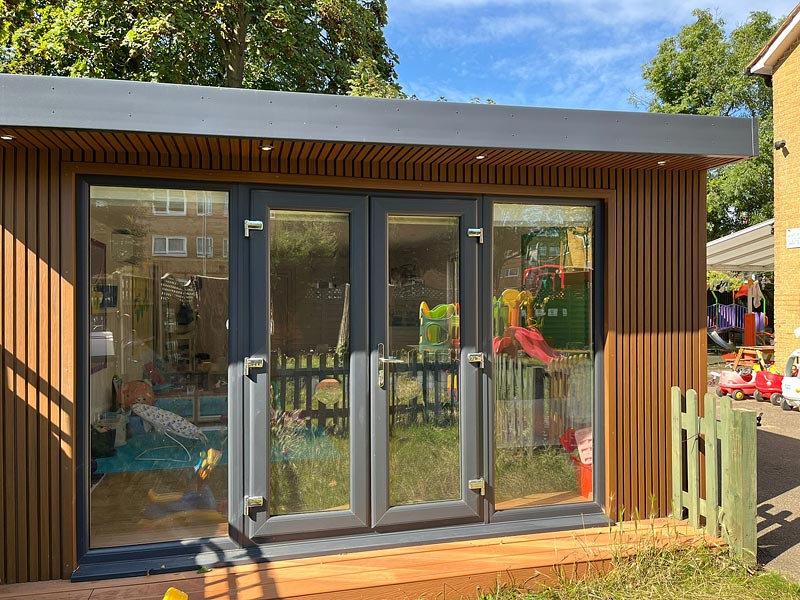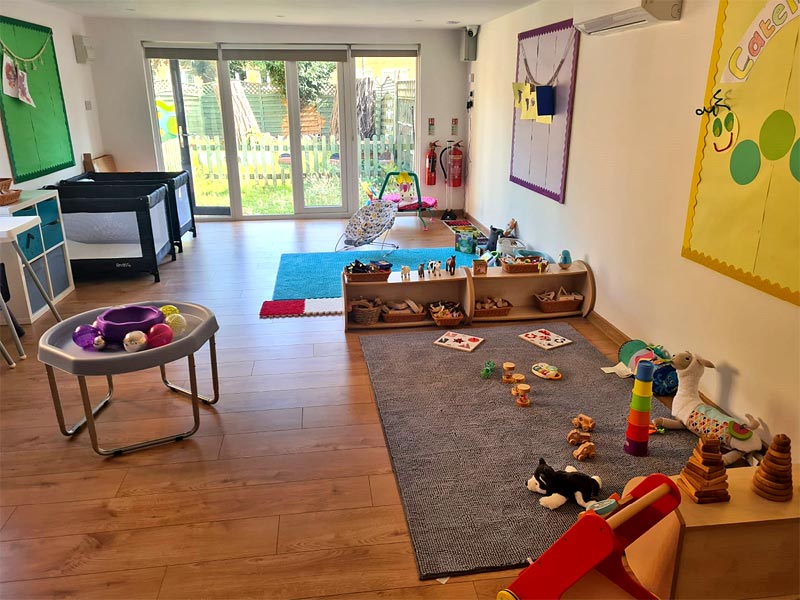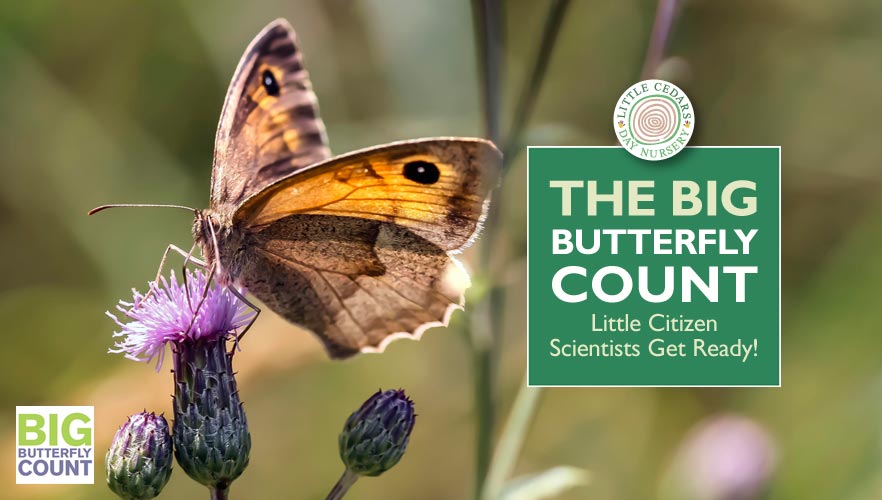
A new approach to Ofsted ratings officially launched in November 2025, as part of a new Education Inspection Framework. Parents of children attending early years settings, schools, and further education, will therefore soon begin to see the new-style Ofsted ‘Report Cards’ that will be published following inspections. These are designed to replace — and improve upon — the previous one-word Ofsted rating system, which had become controversial∞. Gone will be what became known as the “single word judgements” on settings (previously a choice between Outstanding, Good, Requires Improvement, or Inadequate). Instead, parents will see a much more detailed ‘Report Card’ that combines at-a-glance headline information with multiple sub-section details. The idea is to give parents a more comprehensive view of how schools and settings measure up across a broad range of performance metrics, as well as providing important context. In essence, parents will be able to easily and quickly identify areas of strength, as well as those that require development. In today’s post, we take a look at Ofsted’s new Report Card and explain how it works.
The New Performance Metrics
The single ‘Overall Effectiveness’ grade has now been retired. Instead, Ofsted will assess settings across a range of key areas and confirm their evaluation of each one separately on the new Report Card. For each, they will use a 5-point scale, with the exception of Safeguarding, which we’ll come to separately in a moment.
The 5-Point Assessment Scale
 Except for Safeguarding, the new Report Card will show Ofsted’s evaluation of each of the assessment areas as one of the following:
Except for Safeguarding, the new Report Card will show Ofsted’s evaluation of each of the assessment areas as one of the following:
- Exceptional — the highest quality provision (indicated in blue);
- Strong standard (indicated in dark green);
- Expected standard (indicated in bright green);
- Needs attention (indicated in orange); or
- Urgent improvement (indicated in red).
The Report Card will use colour-coding, as indicated above in brackets.
Key Areas of Assessment
For Early Years SettingsFor early years settings, Ofsted will evaluate the following areas of provision:
|
For SchoolsFor schools* inspected by Ofsted, they will evaluate a slightly different list of key areas:
|
* Early years and/or sixth form education will also be assessed if schools provide them. In parallel to the above, independent schools will also continue to be assessed against the ‘independent schools standards’.
For Further Education & Skills ProvidersThe list of key areas of assessment for further education settings and skills providers is longer still. As today’s guide pertains to younger children, however, such a list can be viewed separately here. |
Safeguarding
Because the safety and welfare of children is paramount, Ofsted’s assessment of a setting’s Safeguarding features separately in the new Ofsted Report Card. That’s for all types of settings, whether they’re early years providers, schools, further education, or skills providers.
How will that look? The new Report Card will show the result for the assessment of Safeguarding clearly as either Met (with a green tick) or Not Met. More detail will be available by opening a drop-down ‘show/hide’ selector and sub-link (shown below).

More Details on the Ofsted Report Cards
As well as assigning a finding of either Met or Not Met to the Safeguarding element and rating each of the other key areas using the 5-point scale, Ofsted will provide extra narrative to explain each of the findings in more detail. In tandem with this, additional commentary will provide contextual information, such as any relevant SEND, demographic, or other factors that may explain the story behind the grades. Additional narrative providing an overview of what it’s like to attend the setting will also be included. These expandable narrative sections will be displayed below the more prominent colour-coded assessment grid and Safeguarding section.

Final Thoughts
The new Ofsted report cards intend to give families both an at-a-glance snapshot and more comprehensive details that outline strengths — and any areas that require development — for educational settings like nurseries, schools, colleges, etc. By showing their evaluation of a whole raft of key areas in this way, Ofsted is aiming to give parents a clearer picture of each setting. That’s in stark contrast to the historical “single word judgements” that we’ve been used to – until now. It does make sense — after all, no single word can ever tell the whole story or sum up a unique and complex service.
Not everyone is convinced the changes go far enough. However, Sir Martyn Oliver, His Majesty’s Chief Inspector for Education, Children’s Services and Skills, has said that the new system should be fairer and better for parents, while also providing tangible and financial support to any settings in difficulty. The government expects the new system to raise standards for children, which is incredibly important — and what it’s all about at the end of the day. Learn about the new education inspection framework in more detail here.
Little Cedars Nursery – a Good Provider
Looking for a High-Quality Nursery/Preschool in Streatham?

 We haven’t yet been graded using the new Ofsted rating system, so we don’t yet have one of the new-style ‘report cards’. However, Ofsted rated us as a Good Provider in their most recent report, so you know your little one is in safe hands if you send them to Little Cedars Nursery, Streatham. If you’d like to explore a possible nursery or preschool place for your child at this wonderful setting close to Streatham Common, Streatham Hill, Streatham Park, Tooting, Furzedown, Balham, Norbury, and Colliers Wood, get in touch — or start your application today. We’d love to show you and your child around and answer any questions. We also support funded childcare places for eligible families.
We haven’t yet been graded using the new Ofsted rating system, so we don’t yet have one of the new-style ‘report cards’. However, Ofsted rated us as a Good Provider in their most recent report, so you know your little one is in safe hands if you send them to Little Cedars Nursery, Streatham. If you’d like to explore a possible nursery or preschool place for your child at this wonderful setting close to Streatham Common, Streatham Hill, Streatham Park, Tooting, Furzedown, Balham, Norbury, and Colliers Wood, get in touch — or start your application today. We’d love to show you and your child around and answer any questions. We also support funded childcare places for eligible families.

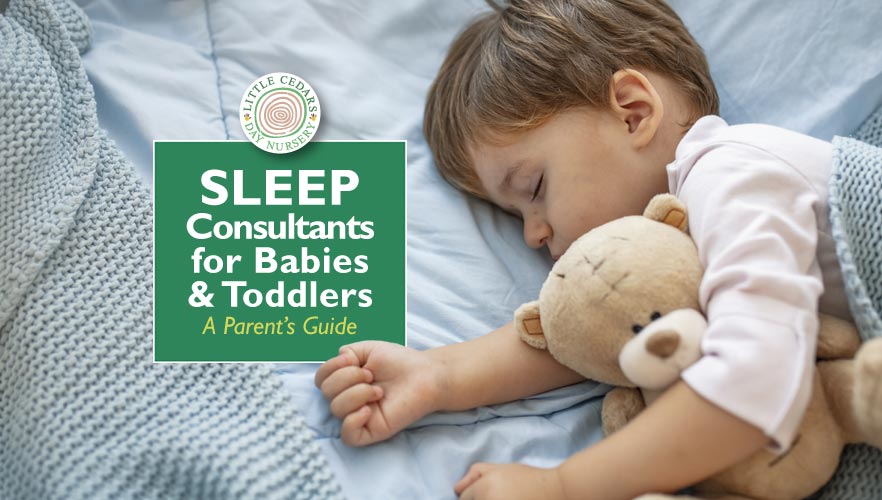
 Sleepless nights are something most parents expect when a new baby arrives. But sometimes those broken nights can stretch on for months, through into toddlerhood, or even beyond. For affected families, bedtime can become a battle every night, and soon the exhaustion can build up and take its toll.
Sleepless nights are something most parents expect when a new baby arrives. But sometimes those broken nights can stretch on for months, through into toddlerhood, or even beyond. For affected families, bedtime can become a battle every night, and soon the exhaustion can build up and take its toll.  A sleep consultant works with families to understand a child’s sleep patterns and suggest gentle, practical ways to improve things. They spend time learning about a child’s routine, feeding habits, daily schedule, and sleep environment before creating an improvement plan that feels realistic for the child’s family. The idea isn’t about handing parents a rigid set of rules, but about working together to find an approach that feels the most suitable and fits in with the family’s values.
A sleep consultant works with families to understand a child’s sleep patterns and suggest gentle, practical ways to improve things. They spend time learning about a child’s routine, feeding habits, daily schedule, and sleep environment before creating an improvement plan that feels realistic for the child’s family. The idea isn’t about handing parents a rigid set of rules, but about working together to find an approach that feels the most suitable and fits in with the family’s values. Working with a sleep consultant often begins with a thorough conversation about your child’s routine — what time they go to bed, how they fall asleep, how they feed, and what happens during the night. From there, the consultant will create a personalised plan that involves tailored changes. These might be small adjustments, such as introducing a calmer wind-down before bed, or they could involve gradually teaching your child to settle with less help. It may also include strategies for how you respond when your child wakes in the night.
Working with a sleep consultant often begins with a thorough conversation about your child’s routine — what time they go to bed, how they fall asleep, how they feed, and what happens during the night. From there, the consultant will create a personalised plan that involves tailored changes. These might be small adjustments, such as introducing a calmer wind-down before bed, or they could involve gradually teaching your child to settle with less help. It may also include strategies for how you respond when your child wakes in the night. Costs for hiring a sleep consultant vary. Depending on the consultant contacted, a one-off initial consultation can often be an affordable first step — and one that will allow families to explore the potential of proceeding with a full plan. However, a full package with several weeks of guidance can often be several hundred pounds. In-home, overnight support is potentially at an even higher end of the scale — but, again, it varies from consultant to consultant. Many families find that online or phone-based support from a sleep consultant is more affordable, and sometimes just as effective.
Costs for hiring a sleep consultant vary. Depending on the consultant contacted, a one-off initial consultation can often be an affordable first step — and one that will allow families to explore the potential of proceeding with a full plan. However, a full package with several weeks of guidance can often be several hundred pounds. In-home, overnight support is potentially at an even higher end of the scale — but, again, it varies from consultant to consultant. Many families find that online or phone-based support from a sleep consultant is more affordable, and sometimes just as effective. At Little Cedars Nursery, we understand that sleep — or the lack of it — has a huge impact on family life. Sleep consultants may not be a quick fix, but for families who are reaching their limit, they can offer a real lifeline. Success usually comes from finding someone whose approach aligns with your parenting style, sticking with the plan for long enough to see improvements, and feeling supported along the way.
At Little Cedars Nursery, we understand that sleep — or the lack of it — has a huge impact on family life. Sleep consultants may not be a quick fix, but for families who are reaching their limit, they can offer a real lifeline. Success usually comes from finding someone whose approach aligns with your parenting style, sticking with the plan for long enough to see improvements, and feeling supported along the way.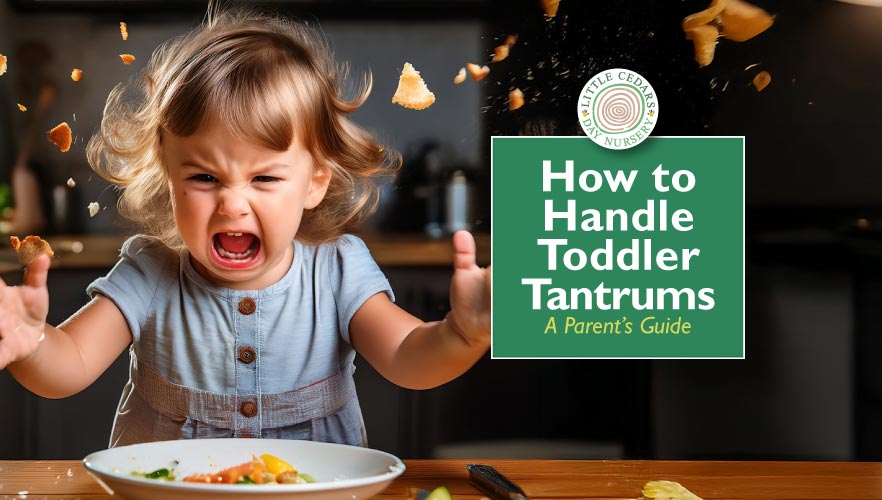
 Tantrums are a common part of life with toddlers and under-fives, but when they happen, they can be very challenging! Whether it’s a meltdown at dinner time or a dramatic on-the-floor outburst in the middle of the supermarket aisle, they can test even the most patient of parents and carers. However, it’s important to understand that tantrums aren’t a sign that something is wrong — they’re actually a normal, healthy stage of child development.
Tantrums are a common part of life with toddlers and under-fives, but when they happen, they can be very challenging! Whether it’s a meltdown at dinner time or a dramatic on-the-floor outburst in the middle of the supermarket aisle, they can test even the most patient of parents and carers. However, it’s important to understand that tantrums aren’t a sign that something is wrong — they’re actually a normal, healthy stage of child development. In their early years, children are still learning how to manage big emotions. There’s a mismatch, though; their brains are developing rapidly, but they haven’t yet mastered language, impulse control, or emotional regulation. So, when they’re tired, hungry, overstimulated, or frustrated, it can all become too much for them.
In their early years, children are still learning how to manage big emotions. There’s a mismatch, though; their brains are developing rapidly, but they haven’t yet mastered language, impulse control, or emotional regulation. So, when they’re tired, hungry, overstimulated, or frustrated, it can all become too much for them.  When a tantrum starts, staying calm yourself is key. Your child will take emotional cues from you, their trusted adult. If you can remain steady, even if you’re feeling flustered inside, you send the message that you’re in control—and that they’re safe.
When a tantrum starts, staying calm yourself is key. Your child will take emotional cues from you, their trusted adult. If you can remain steady, even if you’re feeling flustered inside, you send the message that you’re in control—and that they’re safe. Avoid reasoning or explaining too much during a tantrum. When a child is overwhelmed, they’re unlikely to take much in. It’s often best to wait it out and stay close so they know they’re not alone. For some children, a gentle touch or hug might be helpful. Others may need a bit of space before they’re ready for comfort.
Avoid reasoning or explaining too much during a tantrum. When a child is overwhelmed, they’re unlikely to take much in. It’s often best to wait it out and stay close so they know they’re not alone. For some children, a gentle touch or hug might be helpful. Others may need a bit of space before they’re ready for comfort. Offering limited choices — like “Would you like to wear the red jumper or the blue one?” — can also give them a sense of control without overwhelming them.
Offering limited choices — like “Would you like to wear the red jumper or the blue one?” — can also give them a sense of control without overwhelming them.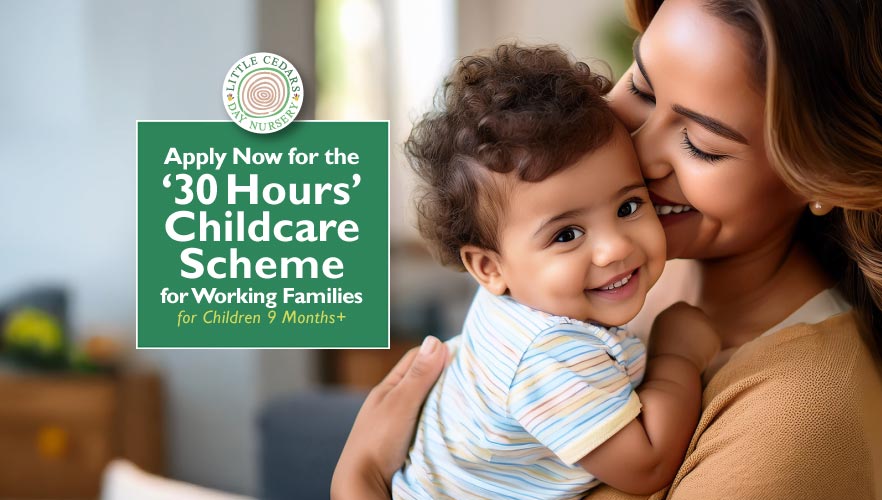
 Work at least 16 hours or more per week at the National Minimum Wage
Work at least 16 hours or more per week at the National Minimum Wage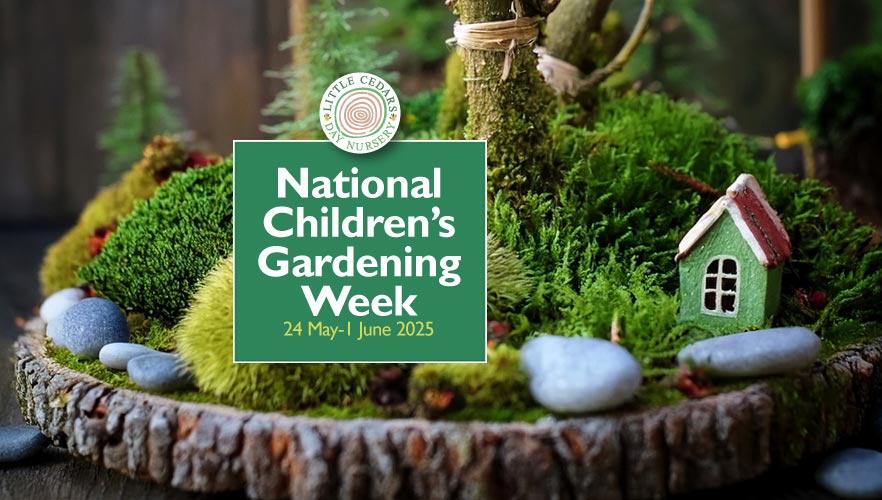
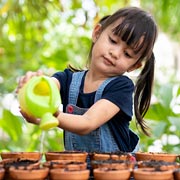 National Children’s Gardening Week is a wonderful annual event that’s designed to inspire children’s curiosity around growing plants and gardening-related activities. It takes place during what is typically a warm period of the year. That’s important because it means seeds and plants will grow faster and need minimal protective measures from inclement weather. Speedy growing results will appeal to little ones!
National Children’s Gardening Week is a wonderful annual event that’s designed to inspire children’s curiosity around growing plants and gardening-related activities. It takes place during what is typically a warm period of the year. That’s important because it means seeds and plants will grow faster and need minimal protective measures from inclement weather. Speedy growing results will appeal to little ones!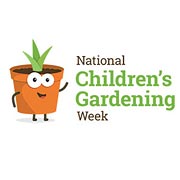 National Children’s Gardening Week coincides perfectly with the Spring Bank Holiday and May half-term school holiday, taking place from the 24th of May to the 1st of June 2025. It’s usually a lovely warm week and is perfect timing for children to make the most of the event and to maximise the many benefits of spending time around nature.
National Children’s Gardening Week coincides perfectly with the Spring Bank Holiday and May half-term school holiday, taking place from the 24th of May to the 1st of June 2025. It’s usually a lovely warm week and is perfect timing for children to make the most of the event and to maximise the many benefits of spending time around nature. National Children’s Gardening Week also raises money to support children in hospices through the national charity Greenfingers. They create inspiring gardens and beautiful outdoor spaces where hospice children with life-limiting conditions can play, rest, relax, and spend time with family and friends. Such outdoor spaces allow affected children to spend quality time away from the bedside in well-designed outdoor areas where they can enjoy all the benefits of fresh air and a natural environment.
National Children’s Gardening Week also raises money to support children in hospices through the national charity Greenfingers. They create inspiring gardens and beautiful outdoor spaces where hospice children with life-limiting conditions can play, rest, relax, and spend time with family and friends. Such outdoor spaces allow affected children to spend quality time away from the bedside in well-designed outdoor areas where they can enjoy all the benefits of fresh air and a natural environment. Children and families can take part at home as well as in participating schools, childcare settings, community groups, ‘outdoorsy’ retail outlets and even some National Trust properties.
Children and families can take part at home as well as in participating schools, childcare settings, community groups, ‘outdoorsy’ retail outlets and even some National Trust properties. Sowing Wildflower Seeds
Sowing Wildflower Seeds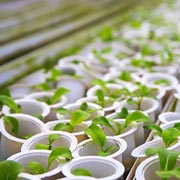 Herbs and some vegetables can be grown from seeds, cultivated, and harvested from simple flowerpots or yoghurt pots. They can also be ‘re-grown’ through various devious means that will fascinate children including under-fives. We wrote a whole post about that too, so take a look — it’s quite ingenious, is incredibly educational, and results in free food! What’s more, it can be done indoors.
Herbs and some vegetables can be grown from seeds, cultivated, and harvested from simple flowerpots or yoghurt pots. They can also be ‘re-grown’ through various devious means that will fascinate children including under-fives. We wrote a whole post about that too, so take a look — it’s quite ingenious, is incredibly educational, and results in free food! What’s more, it can be done indoors.  Another ‘indoor gardening’ activity is growing these comical ‘egg heads’. Grown simply from cress seeds, they can be grown in egg shells as shown, or another alternative would be yoghurt pots. When the cress is ready to be harvested and used in salads or as a garnish, the little characters can have a haircut!
Another ‘indoor gardening’ activity is growing these comical ‘egg heads’. Grown simply from cress seeds, they can be grown in egg shells as shown, or another alternative would be yoghurt pots. When the cress is ready to be harvested and used in salads or as a garnish, the little characters can have a haircut! 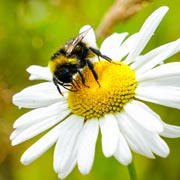 Another activity that children can get involved in for National Children’s Gardening Week is to create bee-friendly gardens. Our recent post about World Bee Day explains how to make a bee oasis (from where bees and pollinators can get a refreshing drink) and a bee-friendly garden.
Another activity that children can get involved in for National Children’s Gardening Week is to create bee-friendly gardens. Our recent post about World Bee Day explains how to make a bee oasis (from where bees and pollinators can get a refreshing drink) and a bee-friendly garden. 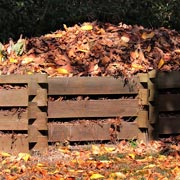 Plants love compost and so do minibeasts. So, another wonderful activity for children in National Children’s Gardening Week is to make homemade compost. Our dedicated
Plants love compost and so do minibeasts. So, another wonderful activity for children in National Children’s Gardening Week is to make homemade compost. Our dedicated Once the flowers are blooming outside, children can experiment with pressing flowers. Pressed flowers are a wonderful way for children to save flowers semi-permanently as keepsakes or to use as part of an art activity.
Once the flowers are blooming outside, children can experiment with pressing flowers. Pressed flowers are a wonderful way for children to save flowers semi-permanently as keepsakes or to use as part of an art activity. The youngest children will love this activity! Children will need some scavenged moss, pebbles, sticks, seashells and perhaps small pieces of driftwood from a beach. Children can then use these to transform the soil in a large pot or on top of a log into
The youngest children will love this activity! Children will need some scavenged moss, pebbles, sticks, seashells and perhaps small pieces of driftwood from a beach. Children can then use these to transform the soil in a large pot or on top of a log into 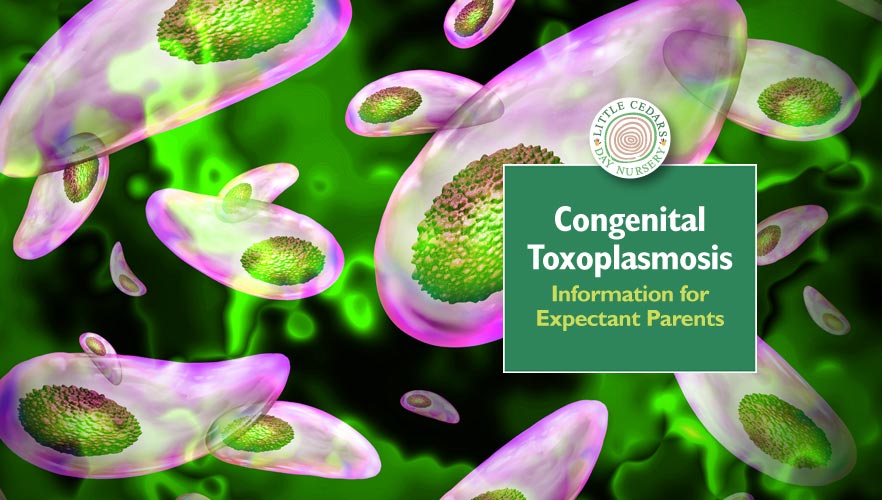
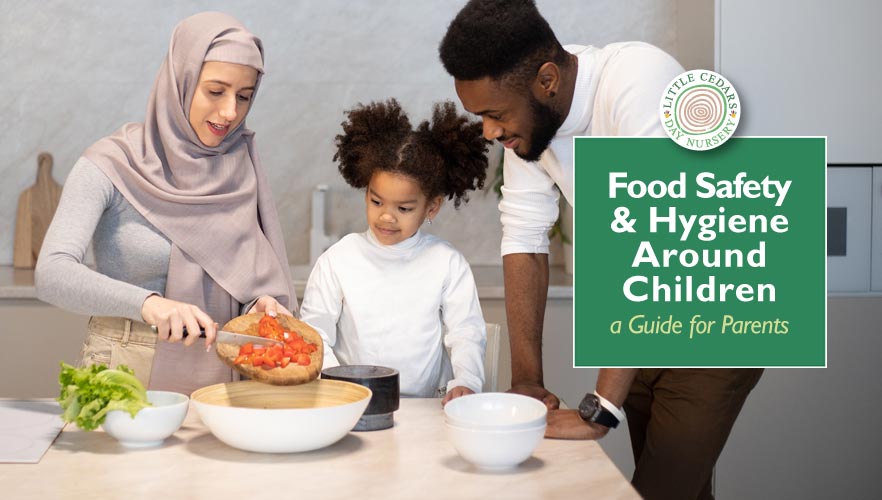
 With all the food and feasting associated with Christmas, it got us thinking about food hygiene and safety for children. Aside from keeping alert to possible allergens, parents need to be careful to ensure families remain safe from illnesses caused by food hygiene mishaps. After all, such illnesses can be particularly dangerous to little ones, who are fragile, but can be largely avoidable when good hygiene measures are taken. With that in mind, today’s post outlines various ways in which parents can stay on top of hygiene around the preparation of food for their children. And, of course, such measures will keep adults safer too.
With all the food and feasting associated with Christmas, it got us thinking about food hygiene and safety for children. Aside from keeping alert to possible allergens, parents need to be careful to ensure families remain safe from illnesses caused by food hygiene mishaps. After all, such illnesses can be particularly dangerous to little ones, who are fragile, but can be largely avoidable when good hygiene measures are taken. With that in mind, today’s post outlines various ways in which parents can stay on top of hygiene around the preparation of food for their children. And, of course, such measures will keep adults safer too. Ensuring the food preparation environment is clean and hygienic will reduce the chance of microbes, including germs and viruses, contaminating food. Wiping down with warm, soapy, water on clean dish cloths is ideal for many such tasks. Anti-bacterial sprays are useful but should not be allowed to contaminate food, plates and cutlery etc. directly or indirectly.
Ensuring the food preparation environment is clean and hygienic will reduce the chance of microbes, including germs and viruses, contaminating food. Wiping down with warm, soapy, water on clean dish cloths is ideal for many such tasks. Anti-bacterial sprays are useful but should not be allowed to contaminate food, plates and cutlery etc. directly or indirectly.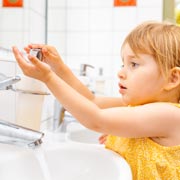
 Only feed children, especially babies and under-fives, age-appropriate food/meals. This is very important because many foods contain too much salt, sugar and saturated fats for young children. Some other foods can contain dangerous levels of toxins or even heavy metals.
Only feed children, especially babies and under-fives, age-appropriate food/meals. This is very important because many foods contain too much salt, sugar and saturated fats for young children. Some other foods can contain dangerous levels of toxins or even heavy metals.  Always thoroughly wash vegetables, fruit and salads and, when appropriate, peel vegetables before use.
Always thoroughly wash vegetables, fruit and salads and, when appropriate, peel vegetables before use.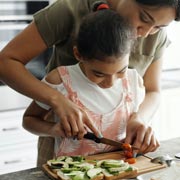 It’s hugely beneficial if children learn about food safety and proper hygiene associated with its preparation. Such things are useful life lessons and will help to keep them more safe and free of illnesses and nasty bugs. Teach them by example whenever possible. A great start is to encourage them to thoroughly wash their hands and fingers with warm, soapy water before preparing or eating food. They should also be encouraged to sit down at the table and be in a calm state before eating. This will help to better ensure food does not become contaminated or knocked onto a dirty floor. It will also reduce the chance of the child choking on food.
It’s hugely beneficial if children learn about food safety and proper hygiene associated with its preparation. Such things are useful life lessons and will help to keep them more safe and free of illnesses and nasty bugs. Teach them by example whenever possible. A great start is to encourage them to thoroughly wash their hands and fingers with warm, soapy water before preparing or eating food. They should also be encouraged to sit down at the table and be in a calm state before eating. This will help to better ensure food does not become contaminated or knocked onto a dirty floor. It will also reduce the chance of the child choking on food.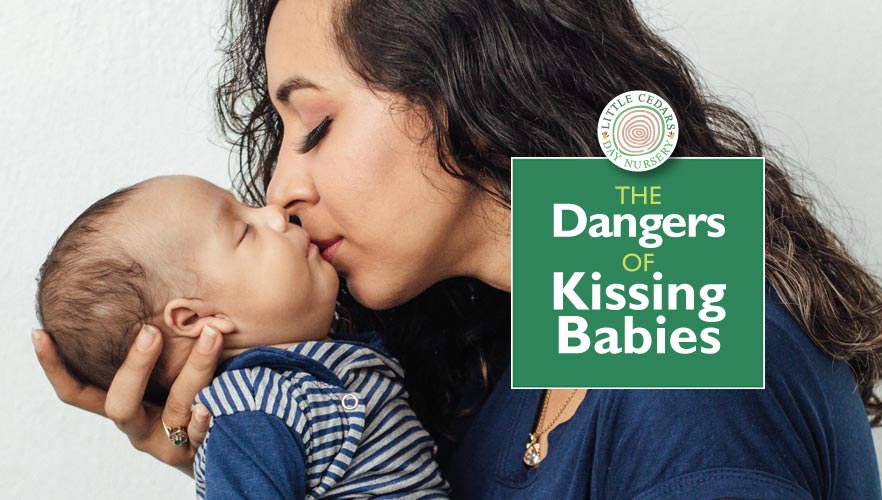
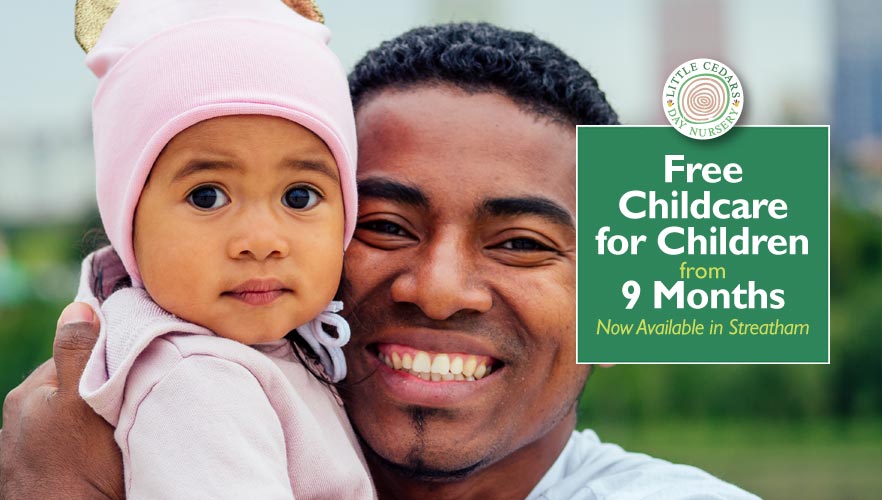
 Last year,
Last year, 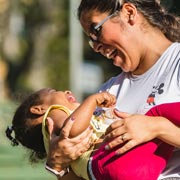 As well as helping families financially, the scheme expansion should help children begin their early years education even earlier, for many, which has been shown to be hugely beneficial to them. The free childcare provision will also help many more women back into the workforce. Children, families and the economy should all benefit.
As well as helping families financially, the scheme expansion should help children begin their early years education even earlier, for many, which has been shown to be hugely beneficial to them. The free childcare provision will also help many more women back into the workforce. Children, families and the economy should all benefit.